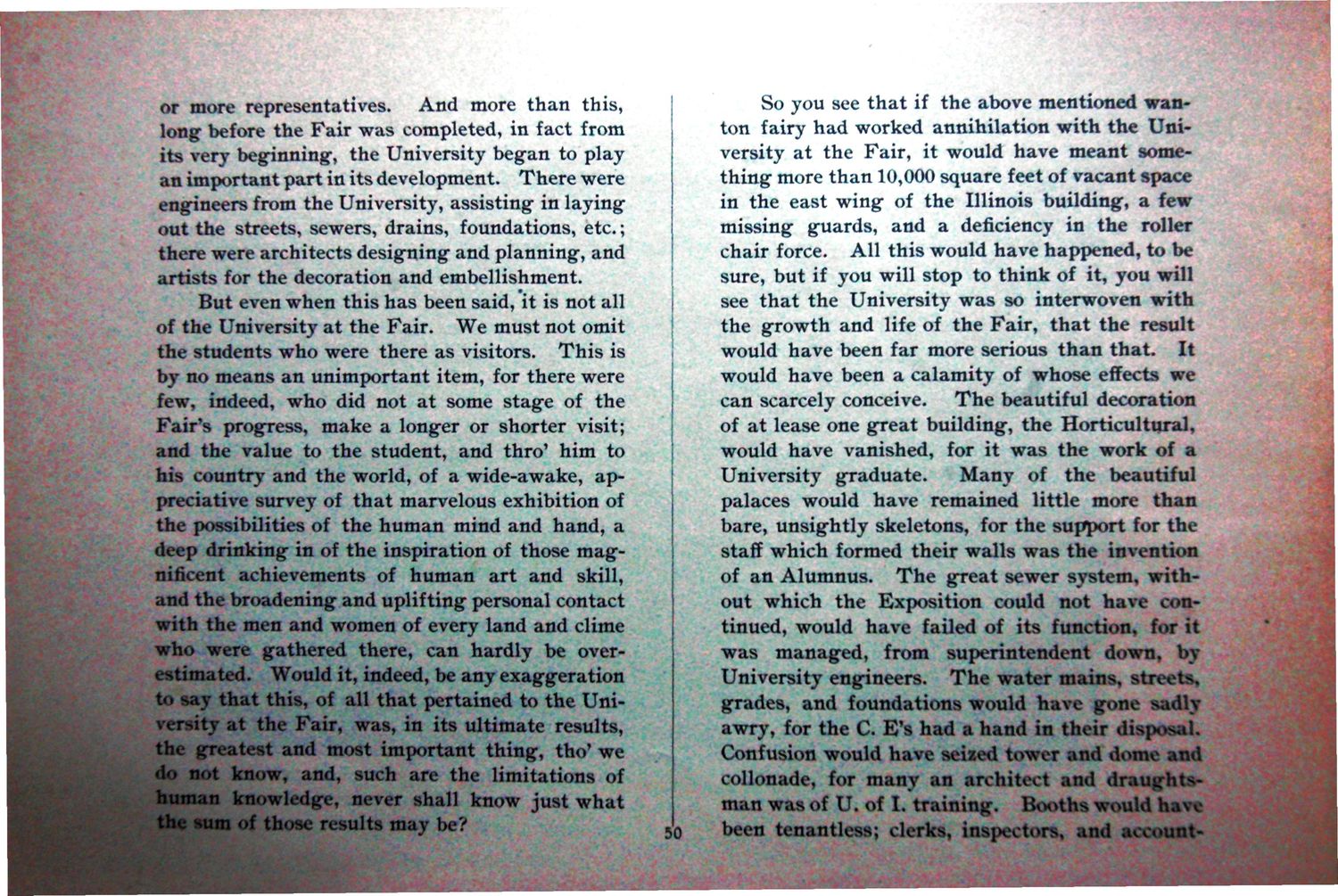| |
| |
Caption: Illio - 1895
This is a reduced-resolution page image for fast online browsing.

EXTRACTED TEXT FROM PAGE:
or more representatives. And more than this, long: before the Fair was completed, in fact from its very beginning", the University began to play an important part in its development- There were engineers from the University, assisting in laying out the streets, sewers, drains, foundations, etc.; there were architects designing and planning, and artists for the decoration and embellishment. But even when this has been said, it is not all of the University at the Fair. We must not omit the students who were there as visitors. This is by no means an unimportant item, for there were few, indeed, who did not at some stage of the Fair's progress, make a longer or shorter visit; 1 and the value to the student, and thro him to his country and the world, of a wide-awake, appreciative survey of that marvelous exhibition of the possibilities of the human mind and hand, a deep drinking in of the inspiration of those magnificent achievements of human art and skill, and the broadening and uplifting personal contact with the men and women of every land and clime who were gathered there, can hardly be overestimated. Would it, indeed, be any exaggeration to say that this, of all that pertained to the University at the Fair, was, in its ultimate results, the greatest and most important thing, tho' we not know, and, such are the limitations of human knowledge, never shall know just what the sum of those results may be? So you see that if the above mentioned wan* ton fairy had worked annihilation with the University at the Fair, it would have meant something more than 10,000 square feet of vacant space in the east wing of the Illinois building, a few missing guards, and a deficiency in the roller chair force. All this would have happened, to be sure, but if you will stop to think of it, you will see that the University was so interwoven with the growth and life of the Fair, that the result would have been far more serious than that. It would have been a calamity of whose effects we can scarcely conceive. T h e beautiful decoration of at lease one great building, the Horticultural, would have vanished, for it was the work of a University graduate. Many of the beautiful palaces would have remained little more than bare, unsightly skeletons, for the support for the staff which formed their walls was the invention of an Alumnus. T h e great sewer system, without which the Exposition could not have continued, would have failed of its function, for it was managed, from superintendent down, by University engineers. T h e water mains, streets, grades, and foundations would have gone sadly awry, for the C. E's had a hand in their disposal. Confusion would have seized tower and dome and collonade, for many an architect and draughtsman was of U. of I. training. Booths would hav^ been tenantless; clerks, inspectors, and account-
| |